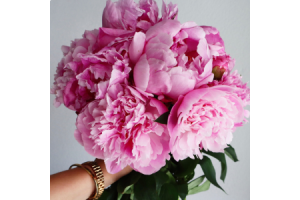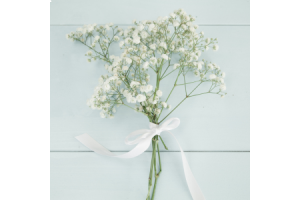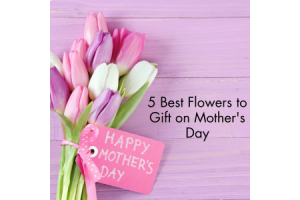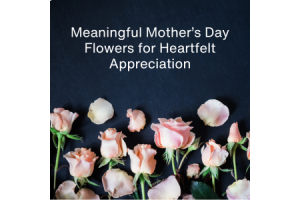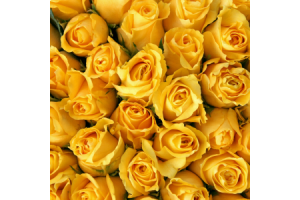We use cookies to make your experience better.
To comply with the new e-Privacy directive, you agree to the privacy policy and our use of cookies.
Hydrangea Harmony: A Concise Guide to Origins, Varieties, Caring tips, and Symbolism
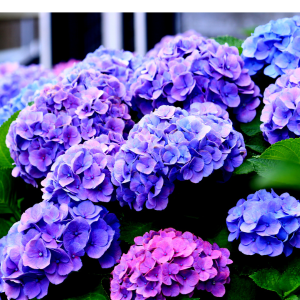
Enter the mesmerizing world of hydrangea flowers – a journey through their origins, vibrant varieties, essential caring tips, and the profound cultural symbolism they carry.
Origins and History
To truly appreciate the allure of hydrangea flowers, it's essential to understand their origins and historical significance. Hydrangeas are native to East Asia, particularly Japan, China, and Korea, where they have been cultivated for centuries. The first recorded mention of hydrangeas dates back to the early 18th century when they were introduced to Europe by explorers and plant collectors.
Over the years, these enchanting blooms have become synonymous with grace and elegance, finding their way into gardens, floral arrangements, and even traditional medicinal practices. The name "hydrangea" itself is derived from the Greek words "hydor" (water) and "angos" (jar), referring to the plant's preference for moist soil.
Varieties of Hydrangea
One of the most captivating aspects of hydrangea flowers is the vast array of varieties available, each with its unique characteristics and charm. Understanding the different types of hydrangeas can help enthusiasts make informed decisions when selecting and cultivating these plants. Common varieties include:
1. Bigleaf Hydrangea (Hydrangea macrophylla): Known for its large, showy blooms, bigleaf hydrangeas are a popular choice in gardens. They come in two main types—mophead, featuring round clusters of flowers, and lace cap, with flattened clusters surrounded by a ring of larger sterile flowers.
2. Panicle Hydrangea (Hydrangea paniculata): These hydrangeas are characterized by their cone-shaped flower clusters. Panicle hydrangeas are more tolerant of cold weather and can add a touch of elegance to any landscape.
3. Smooth Hydrangea (Hydrangea arborescens): Recognized for their smooth, lime-green stems, these hydrangeas produce round clusters of white or pink flowers. The popular cultivar 'Annabelle' is a well-known example of smooth hydrangea.
4. Oakleaf Hydrangea (Hydrangea quercifolia): Named for its leaves' resemblance to those of oak trees, this variety boasts cone-shaped flowers and vibrant fall foliage. Oakleaf hydrangeas are ideal for adding texture to garden landscapes.
5. Climbing Hydrangea (Hydrangea anomala petiolaris): As the name suggests, this hydrangea is a climbing variety that can be trained to cover walls or trellises. With its clinging roots and large, flat clusters of flowers, it adds a touch of elegance to vertical spaces.
Caring Tips for Growing Healthy Hydrangeas:
Growing vibrant hydrangeas requires attention to specific care details. Follow these caring tips to ensure your hydrangeas thrive and grace your garden with their captivating beauty:
1. Choose the Right Location: Select a location with well-draining soil that is rich in organic matter. Ensure the soil retains moisture without becoming waterlogged.
2. Sunlight Requirements: Different hydrangea varieties have varying sunlight preferences. While some thrive in full sun, others prefer partial shade. Understand the needs of your specific hydrangea type and provide the appropriate sunlight conditions.
3. Pruning Techniques: Pruning is essential for shaping your hydrangeas, removing dead wood, and encouraging new growth. Research and follow specific guidelines for your hydrangea variety, as pruning methods and timing vary.
4. Watering: Hydrangeas require consistent moisture, especially during dry spells. Deep watering is preferable to encourage a robust root system. Mulching around the base of the plant helps retain moisture and suppress weeds.
5. Fertilization: Feed your hydrangeas with a balanced fertilizer according to the recommended schedule. This supports their growth and enhances the quality of blooms.
6. Protection from Frost: In regions with cold winters, take precautions to protect your hydrangeas from frost. Mulch around the base of the plant to insulate the roots, and cover the plant with burlap or other protective material during winter.
7. Monitor and Adjust: Regularly monitor your hydrangeas for signs of pests, diseases, or nutrient deficiencies. Adjust your care routine accordingly to address any issues promptly.
8. Consider Container Gardening: If you have limited space or challenging soil conditions, consider growing hydrangeas in containers. This allows for better control over soil quality, sunlight exposure, and mobility.
9. Seasonal Adjustments: Be mindful of seasonal changes and adjust your care routine accordingly. Hydrangeas may have different requirements during the growing season, flowering period, and winter dormancy.
10. Share the Love: Hydrangeas respond well to care and attention. Spend some time admiring and caring for your plants regularly. This not only enhances their well-being but also provides a therapeutic and rewarding gardening experience.
Symbolism and Cultural Significance
Hydrangeas hold different meanings and cultural significance in various societies. Understanding the symbolism associated with these flowers adds an extra layer of appreciation for their beauty. Some common interpretations include:
1. Beauty and Grace: Hydrangeas are often seen as symbols of beauty and grace. Their large, intricate blooms are admired for their elegance, making them a popular choice in gardens and floral arrangements.
2. Understanding and Gratitude: In Japanese culture, hydrangeas are associated with understanding and gratitude. They are often given as gifts to express appreciation and convey heartfelt sentiments.
3. Emotional Well-being: In Victorian times, hydrangeas were believed to symbolize heartfelt emotions and understanding. The language of flowers, or floriography, was a popular means of communication, and hydrangeas conveyed a sense of genuine emotion.
4. Endurance and Perseverance: In some cultures, hydrangeas are seen as symbols of endurance and perseverance. Their ability to thrive in various conditions and climates reinforces the idea of resilience in the face of challenges.
Conclusion
In conclusion, the world of hydrangea flowers is a captivating realm filled with history, diversity, and symbolism. From their humble origins in East Asia to their widespread cultivation across the globe, hydrangeas have earned their place as beloved ornamental plants. Whether adorning gardens, gracing floral arrangements, or carrying cultural significance, these enchanting blooms continue to captivate and inspire nature enthusiasts worldwide. As you embark on your journey with hydrangeas, may this guide serve as a comprehensive resource to enhance your understanding and appreciation of these stunning flowers.

